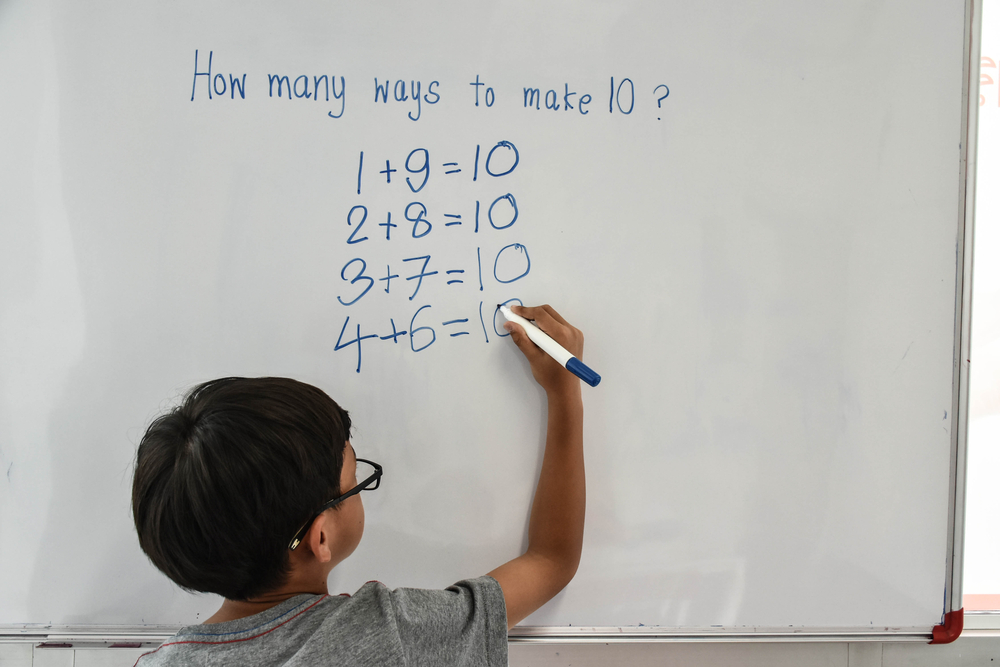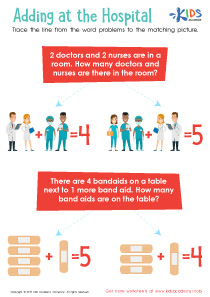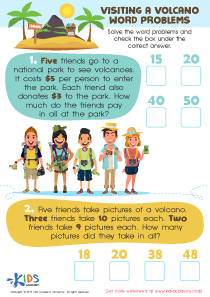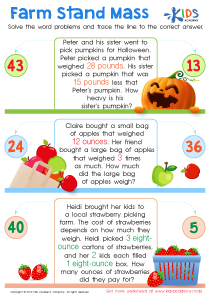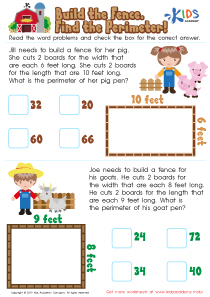Normal Money Word Problems Worksheets for Ages 6-7
1 filtered results
-
From - To
Introduce your young learners, ages 6-7, to the essential skill of handling money with our Educational Interactive Worksheets focused on Normal Money Word Problems. Designed to engage and educate, these worksheets blend fun with practicality, ensuring that children grasp the fundamentals of currency, making change, and simple transactions through interactive problem-solving activities. Each worksheet is crafted to stimulate curiosity and enhance understanding, providing a solid foundation in basic monetary concepts. Perfect for both classroom and home use, these worksheets will make learning about money an enjoyable venture for young minds. Equip your children with the knowledge to navigate everyday financial situations confidently!
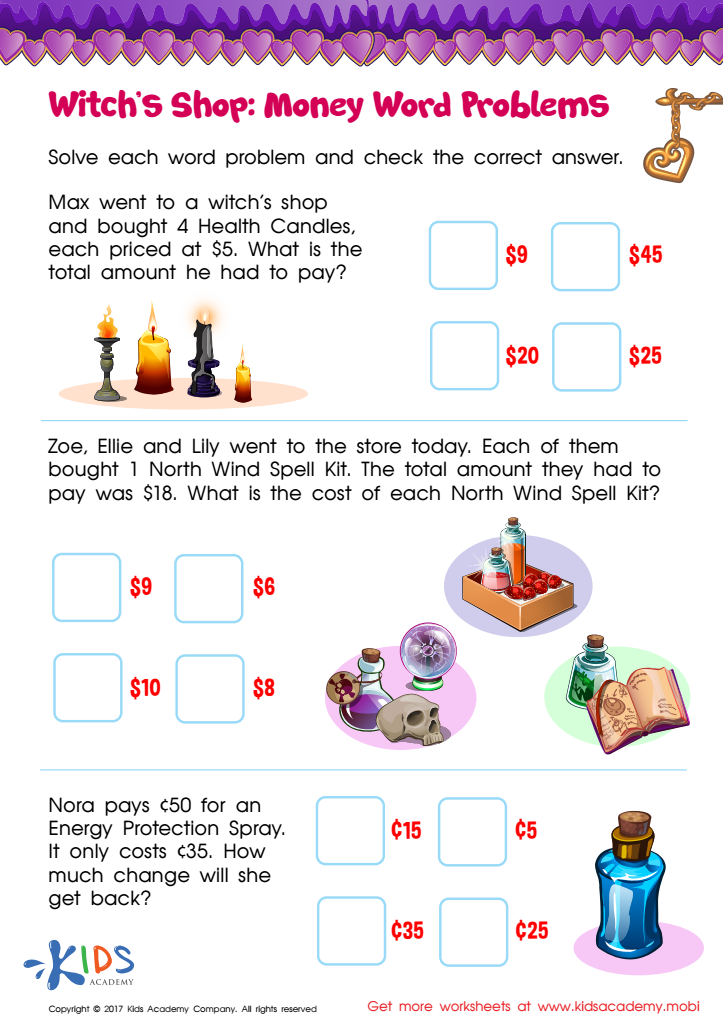

Money Word Problems Printable
The Value of Normal Worksheets on Money Word Problems: Harnessing Educational Interactive Printables for Young Minds
In the foundational years of education, particularly for children aged 6-7, the integration of practical life skills within the curriculum is crucial. One of the essential aspects of early learning is developing a basic understanding of money management, a skill that not only enhances numeracy but also introduces young learners to real-world applications of mathematics. Normal worksheets on Money Word Problems are instrumental tools in this educational journey, serving as educational interactive printables that engage, educate, and entertain young minds.
Why are these worksheets so valuable for children aged 6-7?
-
Building Basic Mathematical Skills: At the age of 6-7, children are at a critical stage in their mathematical development. Normal worksheets on Money Word Problems help in strengthening basic arithmetic operations such as addition, subtraction, and simple multiplication, which are often framed within the context of money. This not only makes the learning process enjoyable but also ensures that these young learners can see the practical applications of what they are learning.
-
Developing Problem-Solving Skills: Money word problems require children to read, comprehend, and then solve the problems presented. This process is pivotal in enhancing their problem-solving skills. Educational interactive printables designed with intriguing scenarios involving money (like buying toys, sharing candies, etc.) compel children to think critically and creatively to arrive at solutions.
-
Introducing Financial Literacy: Early education in financial literacy is a stepping stone to responsible money management later in life. Through these worksheets, children learn the concepts of money, value, and basic financial decision-making. Whether it’s deciding between different prices, calculating change, or understanding spending and saving, these practical lessons instill foundational financial knowledge and habits.
-
Enhancing Cognitive Development: Engaging with money word problems through worksheets involves various cognitive processes including memory, attention to detail, and logic. These educational interactive printables are designed to be age-appropriate, ensuring that the children are challenged just enough to push their cognitive abilities without overwhelming them.
-
Interactive Learning: Unlike traditional learning modules, educational interactive printables offer an immersive learning experience. These worksheets often include colorful visuals, real-life problem scenarios, and interactive segments that keep children engaged. This form of learning ensures better retention of concepts and a more enjoyable learning experience that resonates with young students.
-
Encouraging Real-World Application: By using everyday contexts, money word problems bring math from the abstract into the tangible world children understand. For instance, asking how many coins they need to buy a toy makes the math problem relatable and emphasizes the usefulness of math in daily life. This real-world application fosters an appreciation for learning by showing them how education is directly relevant to their experiences and surroundings.
-
Supporting Parental Involvement: Educational interactive printables are excellent tools for parental involvement in their child’s education. They provide a structured way for parents to discuss money, budgeting, and simple math with their children, turning homework into a cooperative learning experience. This not only supports the child’s educational development but also strengthens the parent-child relationship by engaging in shared activities that are both educational and fun.
-
Boosting Confidence: Mastery of these worksheets can significantly boost a child’s confidence. As they solve problems successfully, they build self-assurance in their mathematical abilities and in handling money—skills that are important as they grow older. Confidence in these areas can also encourage a more positive attitude towards more challenging subjects and concepts in the future.
-
Flexibility in Learning: The versatile nature of educational interactive printables allows them to be used in various settings, be it in classrooms, homeschooling environments, or even during travel. This flexibility ensures that learning doesn’t have to stop outside the classroom and can be adapted to fit different learning styles and environments.
-
Preparation for Future Learning: Finally, these worksheets lay a foundational stone for more complex mathematical and financial concepts that children will encounter as they advance in their education. Early exposure to handling money through word problems simplifies the transition to more advanced economics and mathematics in later years.
In conclusion, normal worksheets on Money Word Problems are more than just paper and pencil activities. They are comprehensive educational tools that mold young minds through interactive, engaging, and real-world applications of math. By integrating these worksheets into the learning curriculum of children aged 6-7, educators and parents can provide a holistic approach to early education that builds not only mathematical skills but also life-long financial literacy and problem-solving abilities. These educational interactive printables are indeed invaluable assets in nurturing savvy, competent, and confident young individuals.

 Assign to the classroom
Assign to the classroom




